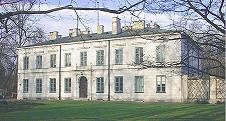Zabytkowa kamienica w Polsce międzywojennej. Badania, konserwacja, adaptacje
The Historical Town House in Inter-war Poland
Author(s): Jakub LewickiSubject(s): Fine Arts / Performing Arts
Published by: Krajowy Ośrodek Badań i Dokumentacji Zabytków
Keywords: town houses; twentieth century; urban development; Lvov; Warsaw; Cracow; Toruń; Vilno; history of architecture; conservation of historical townhouse; neo-Renaissance; neo-Baroque; Neoclassical
Summary/Abstract: Thorough research into town houses was initiated during the first half of the twentieth century, the period of the first modern studies dealing with the urban development of old towns (the most extensive investigations were conducted in Lvov, Warsaw and Cracow). The investigations encompassed an analysis of particular town houses as well as their complexes perceived from the viewpoint of the history of architecture. Scientific investigations conducted at the time inspired the conservation of old town houses, which entailed reconstruction of wartime devastation, the recreation and rebuilding of transformed parts of buildings, and the conservation of historical townhouse complexes as well as a reform of the development of the lots. A number of town houses in Lvov, Cracow, Warsaw, Toruń, Vilno and several smaller centres was subjected to conservation. Greatest importance was attached to the facade and rendering its spatial configuration more legible, without, as a rule, due attention paid to the development of building lots. Conservation entailed the repair and conservation of elevations and, sometimes, of particular details (masonry or ceilings). Upon certain occasions, the conservation of interiors led to the removal of secondary divisions and rendering the historical outfitting of the interiors more legible. Upon other occasions, old town houses were arranged in a contemporary mode. Such reconstruction was carried out in a historical spirit (arbitrary compositions of neo-Renaissance, neo-Baroque, Neoclassical and modern elements). The town houses were also granted a contemporary modernist outfitting which referred to stylised historical forms. The work conducted at the time frequently exceeded the binding theory of the history and conservation of architecture, and the applied solutions were repeated after the second world war when they probably influenced the conception of reconstructing the townhouse development of historical cities. The article analyses researc
Journal: Ochrona Zabytków
- Issue Year: 2002
- Issue No: 3-4
- Page Range: 241-260
- Page Count: 20
- Language: Polish

